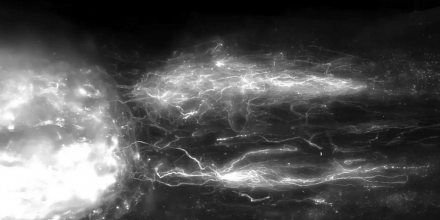Overcoming the "unthinkable" – reversing paralysis via spinal cord regrowth
27.09.2023 posted by Admin

Researchers from .NeuroRestore in Switzerland have made a groundbreaking discovery in the field of spinal cord injuries. They've developed a gene therapy, successfully tested on mice, that promotes nerve regrowth across damaged spinal cords and guides these nerves to reconnect with their natural targets, ultimately restoring mobility.
When both mice and humans experience partial spinal cord injuries, initial paralysis is typically followed by a spontaneous recovery of motor function. However, in cases of complete spinal cord injuries, this natural healing process doesn't occur, resulting in no recovery. Achieving meaningful recovery after severe injuries requires strategies to encourage nerve fiber regeneration, but finding the right conditions for these strategies to restore motor function has been a challenge.
Five years ago, scientists demonstrated that nerve fibers could be regenerated across fully damaged spinal cord injuries. Still, they faced a hurdle as these newly formed fibers failed to connect to the correct locations on the opposite side of the injury. Mark Anderson, the director of Central Nervous System Regeneration at .NeuroRestore, collaborated with researchers from the University of California, Los Angeles (UCLA) and Harvard Medical School to uncover the specific type of neuron responsible for natural spinal cord repair after partial injuries.
Through advanced techniques like single-cell nuclear RNA sequencing, they not only identified the key axons that needed regeneration but also realized that these axons had to reconnect with their natural targets to restore motor function. Their findings were published in the September 22, 2023, issue of Science.
This discovery laid the foundation for a multi-pronged gene therapy approach. Scientists activated growth programs in the identified neurons in mice to regenerate nerve fibers, increased specific proteins to support neuron growth through the injury site, and administered guidance molecules to attract regenerating nerve fibers to their natural targets below the injury. This therapeutic strategy mimicked the spontaneous spinal cord repair mechanisms seen after partial injuries.
Remarkably, mice with anatomically complete spinal cord injuries regained the ability to walk, exhibiting gait patterns similar to those observed in mice that naturally resumed walking after partial injuries. This uncovered a previously unknown requirement for regenerative therapies to succeed in restoring motor function following neurotrauma. Grégoire Courtine, a senior author of the study, emphasized the need for a combined approach involving gene therapy and electrical spinal cord stimulation for a complete solution in treating spinal cord injuries.
While several challenges remain before applying this gene therapy in humans, these scientists have taken significant strides toward developing the technology necessary to make this a reality in the years ahead.
When both mice and humans experience partial spinal cord injuries, initial paralysis is typically followed by a spontaneous recovery of motor function. However, in cases of complete spinal cord injuries, this natural healing process doesn't occur, resulting in no recovery. Achieving meaningful recovery after severe injuries requires strategies to encourage nerve fiber regeneration, but finding the right conditions for these strategies to restore motor function has been a challenge.
Five years ago, scientists demonstrated that nerve fibers could be regenerated across fully damaged spinal cord injuries. Still, they faced a hurdle as these newly formed fibers failed to connect to the correct locations on the opposite side of the injury. Mark Anderson, the director of Central Nervous System Regeneration at .NeuroRestore, collaborated with researchers from the University of California, Los Angeles (UCLA) and Harvard Medical School to uncover the specific type of neuron responsible for natural spinal cord repair after partial injuries.
Through advanced techniques like single-cell nuclear RNA sequencing, they not only identified the key axons that needed regeneration but also realized that these axons had to reconnect with their natural targets to restore motor function. Their findings were published in the September 22, 2023, issue of Science.
This discovery laid the foundation for a multi-pronged gene therapy approach. Scientists activated growth programs in the identified neurons in mice to regenerate nerve fibers, increased specific proteins to support neuron growth through the injury site, and administered guidance molecules to attract regenerating nerve fibers to their natural targets below the injury. This therapeutic strategy mimicked the spontaneous spinal cord repair mechanisms seen after partial injuries.
Remarkably, mice with anatomically complete spinal cord injuries regained the ability to walk, exhibiting gait patterns similar to those observed in mice that naturally resumed walking after partial injuries. This uncovered a previously unknown requirement for regenerative therapies to succeed in restoring motor function following neurotrauma. Grégoire Courtine, a senior author of the study, emphasized the need for a combined approach involving gene therapy and electrical spinal cord stimulation for a complete solution in treating spinal cord injuries.
While several challenges remain before applying this gene therapy in humans, these scientists have taken significant strides toward developing the technology necessary to make this a reality in the years ahead.